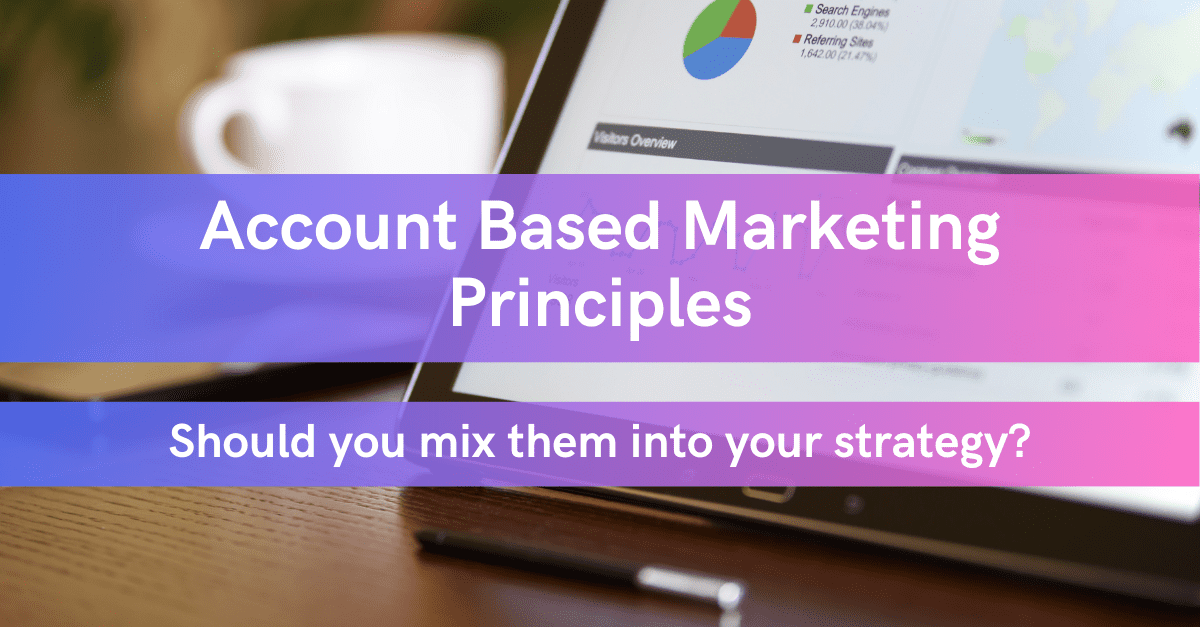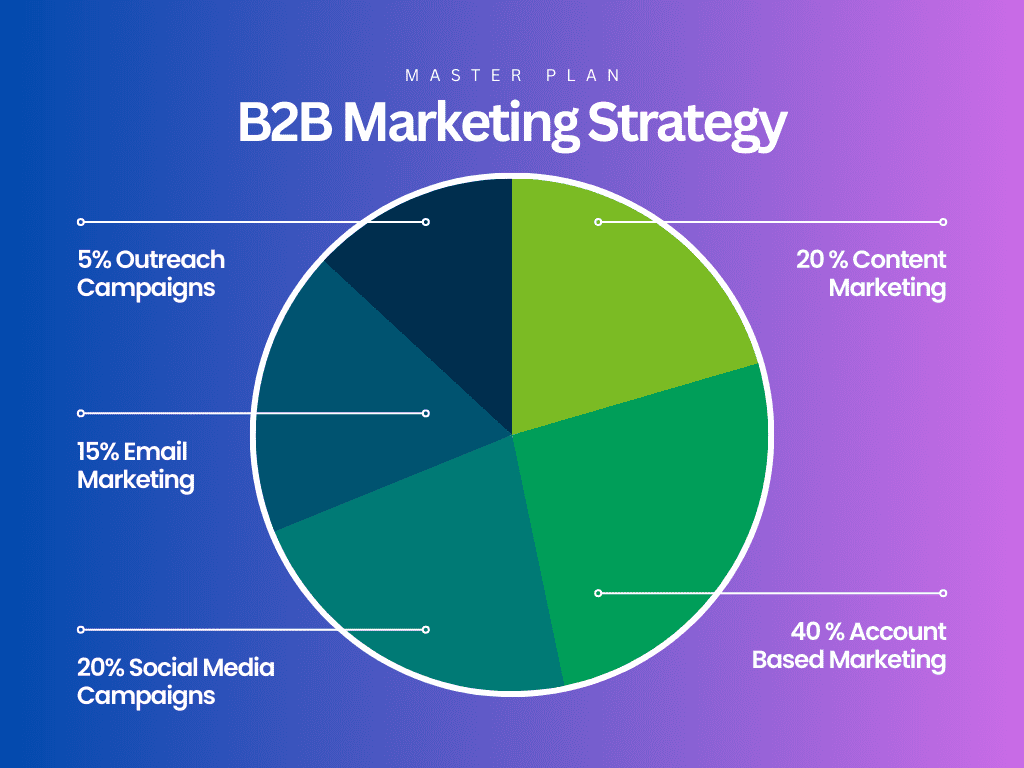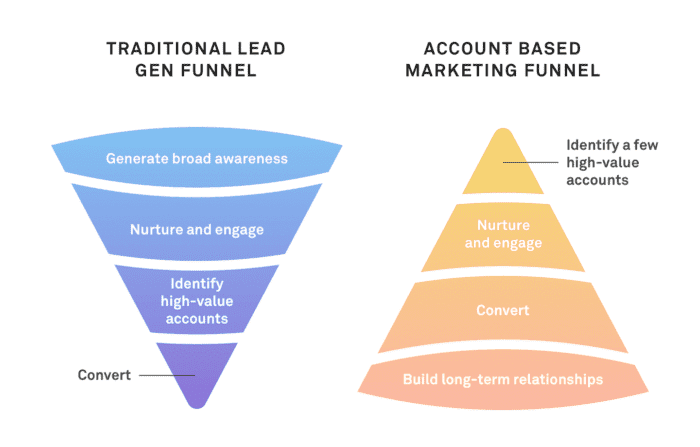When to Mix Account Based Marketing Principles into Your Strategy

Are you thinking about adding some account based marketing principles into your overall marketing strategy? If so, this has probably led you to ask the question, “Does account based marketing (ABM) mix well with other strategies?”
This is a completely reasonable question. After all, you’ve probably invested a lot of time and energy into your current campaigns. The last thing you want to do is flush them all down the drain.
Here’s the thing: It’s no secret that B2B companies such as SaaS and manufacturing industries benefit greatly when they adopt an ABM playbook to drive sales. This is because ABM allows you to really focus on, target, and pursue big accounts that have the best chances of converting into long-term clients.
But, is ABM the only strategy you should use? Or can you mix it together with other campaign styles such as lead generation? Let’s find out!
PSA: There’s No One-Size-Fits-All Approach to Marketing
Here’s the quick answer: YES. You can mix ABM with other marketing strategies.
Since there’s no single magic marketing trick that will work for every business out there, companies often have to mix and match different tactics to get the right result. Although you can look at industry trends and get a good idea of which strategy might work best for you, there are times where you might have to get creative to really reach your goals.
For instance, although ABM is commonly used by B2B industries and generally produces great results, you might need to combine other marketing practices to really reach your specific consumers. Depending on your niche audience and the products and services you offer, you might need to add a pinch of account based marketing principles here, throw in a dash of lead generation there, and wrap it all up with some retention or relationship marketing techniques.
The real question you should be asking is this: SHOULD you add ABM to your overall strategy?
When to Adopt Account Based Marketing Principles

Consider using ABM if…
- You have a high-involvement and/or a high-cost offering
- You have specific high-value accounts that you would like to work with
- You need to foster a strong relationship with each account before they are ready to partner with you
- You want to focus on larger deal sizes
- Your sales and marketing team are willing to work together
Furthermore, keep in mind that ABM often requires businesses to invest in predictive analytics, intent data, and a good CRM system. These ABM tools will help you pinpoint the best accounts to market to first (in other words, the accounts that are most likely to convert and give you a strong ROI).
Now, let’s answer the question:
Should You Add ABM to Your Overall Strategy?
If you checked off all 5 points in the list above, then YES. You should definitely add account based strategy principles to your overall strategy! ESPECIALLY if you have a high-involvement, high-cost offering and you cater to very specific high-value accounts.
But, what if you only checked a few boxes off of the list? YES, you can still benefit from ABM tactics, you just have to decide what type of principles you would like to implement and by how much.
It’s All About the Right Ratio

If you’re not already employing account based marketing principles, then you most likely use traditional inbound marketing (i.e. lead generation and content marketing). Here’s the good news: You can run ABM parallel with your inbound campaigns. The secret is to find the right ratio that best fits you and your consumers.
So, how do you come up with the right ratio? Consider the following:
- Your brand
- Who are you and what do you offer?
- Does ABM make sense for your brand?
- Your existing clients
- How do they respond to your current lead-based marketing strategy?
- How involved are they with your brand?
- Are strong brand-client relationships important to them?
- Your target audience
- Which high-value accounts are you targeting?
- What are their demographics?
- Where are they located?
- Your resources
- Are you willing to invest in specialized tools to optimize an ABM approach?
- Are your marketing and sales departments willing to work together?
- Your company’s level of maturity
- What stage of growth are you in?
Depending on your answers to these questions, you can cook up the right ratio for your strategy. Whether it’s a perfect 50/50 mix of ABM and lead-based marketing, or if it’s 80/20 or even 90/10, it really depends on your business model and clientele.
How to Mix Account Based Marketing Principles with Lead-Based Campaigns
With so many types of marketing out there, it’s only a matter of time before you start mixing different ones together. When it comes to adding account based marketing principles to your master plan, you should consider how ABM will help bolster your current strategies.
In other words, instead of diving head-first into ABM and leaving your other campaigns out in the cold, you should create an overarching strategy that capitalizes on all the facets of each marketing tactic you employ.
For example, B2B companies will often use ABM to target high-profile accounts that they definitely want to close that quarter. This requires the sales and marketing departments to get on the same page and heavily pursue these key accounts. HOWEVER, a big mistake businesses make is they stop their other lead-based campaigns, such as paid media, to focus completely on ABM. This could cause them to miss quality leads that wouldn’t be captured through ABM alone.
Send Accounts & Leads Through Their Corresponding Funnels
Depending on how your business is structured and the type of product or service you offer, you can still rake in a lot of customers through traditional inbound marketing. You just need to organize your marketing team in a way where they can easily filter the accounts that come in through your ABM funnel versus those that were captured through lead-based techniques.
Why do you need to do this?
For starters, it’s important to realize that lead generation and other inbound strategies send leads through a wide-mouth funnel, while account based marketing principles push target accounts through an inverted, narrow-mouth funnel.
Therefore, you’ll want to keep your targeted accounts and organic leads separated. This will help you keep everything in order so you can appropriately nurture the leads based on the strategy they came through.

Example of B2B Mixing ABM with Inbound Marketing
Now that you have a better understanding of how you can mix account based marketing principles into your strategy, let’s take a look at a real-time example of a B2B company that successfully did this.
Khameleon Software: Conversions Skyrocket by 8600%
Khameleon is a software company that offers a high-involvement, high-cost enterprise resource planning (ERP) solution. The company targets a very niche market of security integrators and office furniture dealers, and heavily relies on strong relationships with its partners to maintain its clients in the long run.
ABM Fosters Long-Lasting Partnerships
As you can see, Khameleon’s SaaS requires a very specific marketing approach to reach its key accounts, which makes ABM a perfect match for the company. To cater to these ideal accounts, Khameleon created several in-depth webinars, software demos, and case studies that specifically targeted the CEOs and key players of these accounts. They also used ABM tactics to build a tight-knit community among their current client base and marketed this community to prospect accounts.
When they migrate one high-profile account to their system, they often retain the account for years to come. In fact, many of their current clients have partnered with them for 10+ years! Therefore, the strong relationship-based principles employed by ABM have really benefited Khameleon’s bottom line.
Lead Generation Boosts Organic Traffic

On the other hand, lead-based tactics have also proven to be extremely valuable to Khameleon.
For example, Khameleon developed a comprehensive inbound marketing strategy that involved a strategic SEO content marketing campaign to drive organic traffic to their website. Through this particular lead-based approach, Khameleon saw their organic website traffic go up 394% and a 250% boost in qualified leads, leading to conversions increase by 8600%.
They also implemented social media strategies (particularly through LinkedIn), email marketing campaigns, and outreach marketing. All in all, the company saw great success when it mixed particular account based marketing principles with its overall inbound marketing strategies.
Final Thoughts
At the end of the day, the vast majority of businesses mix and match all types of marketing tactics to create one overarching strategy. After all, there’s no one-size-fits-all approach to marketing.
For B2B industries like manufacturing and SaaS, ABM is a great strategy to add to your master plan. Now the next question is… where do you start?
If you’re having a hard time building a fool-proof digital marketing strategy, our full-service agency can help. Chatter Buzz has years of experience creating the perfect marketing strategies for businesses of all shapes and sizes, including those in B2B industries!
We have loads of marketing expertise and FREE resources to help you get on track, such as this complete guide to digital marketing solutions for manufacturers. Reach out to us anytime, we’re one call away!








